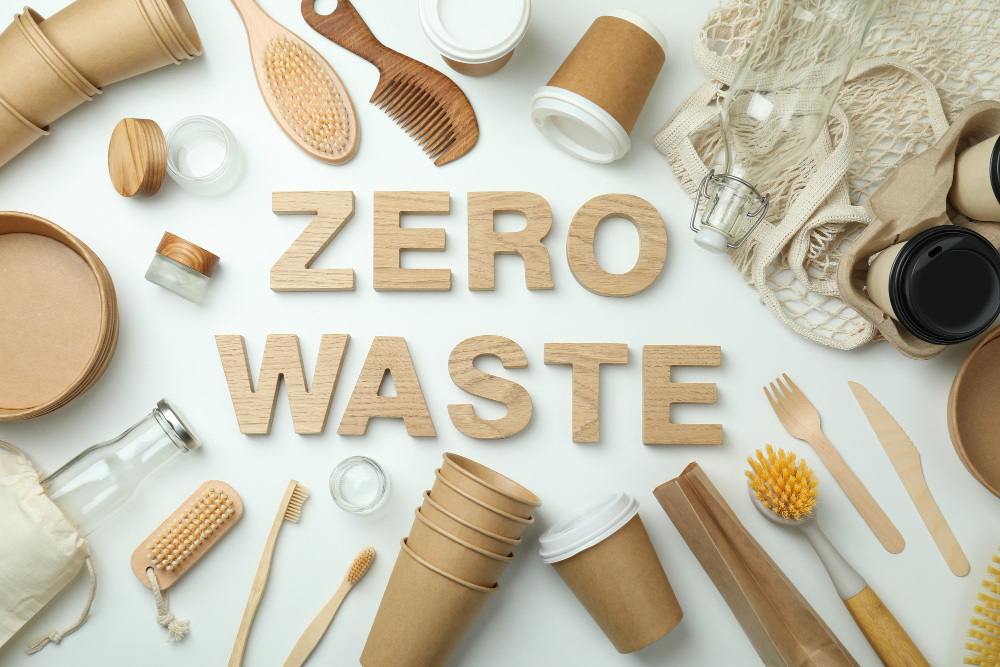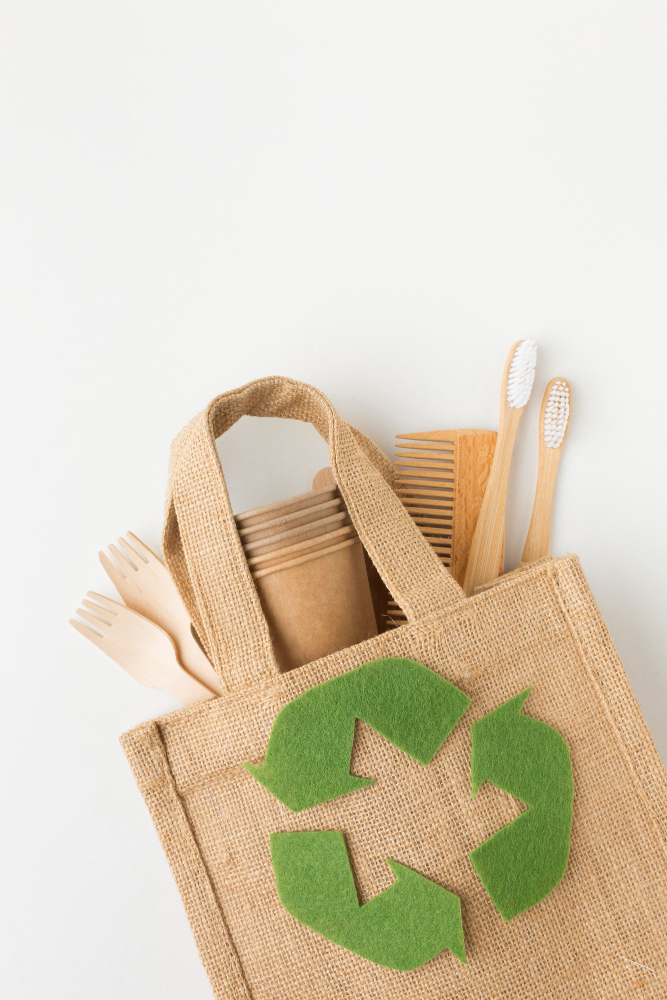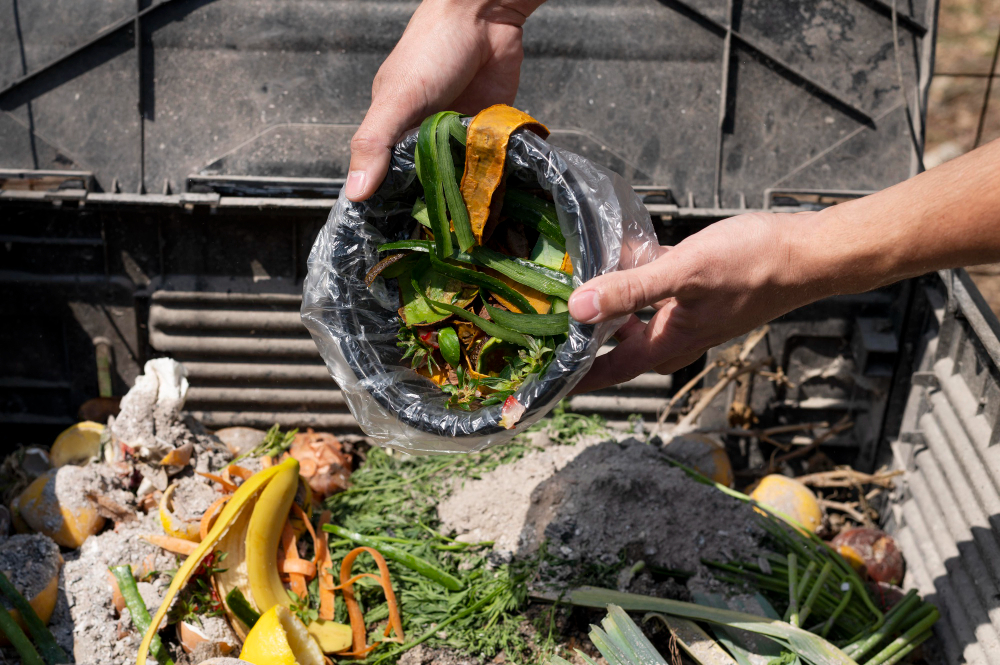Last updated on
In a world grappling with the escalating consequences of environmental neglect, the shift towards sustainability is not just a choice but a necessity. At the forefront of this green revolution are biodegradable materials, emerging as beacons of hope in our collective quest for a healthier planet.
The Environmental Predicament of Non-biodegradable Materials

Our planet’s narrative in recent decades has been marred by the proliferation of non-biodegradable materials. From the depths of our oceans to the peaks of our highest mountains, the remnants of these materials are omnipresent, silently testifying to the enduring impact of human activity.
The statistics are alarming – millions of tons of plastic waste choking marine life, landfills overflowing with indestructible waste, and microplastics infiltrating the very air we breathe. This environmental crisis is not just a threat to ecosystems but to human health and future generations.
A Journey Through Innovation

Recognizing the urgency of the situation, this blog embarks on an exploratory journey into the realm of biodegradable materials. Our focus is not on the gloom of the present but on the promise of the future.
We delve into the heart of innovation where science and sustainability converge, unveiling the latest advancements in biodegradable materials. From groundbreaking bioplastics to novel composites, we uncover the materials that are set to redefine our relationship with the environment.
As we navigate through these innovations, our goal is twofold: to illuminate the path towards environmental redemption and to inspire a collective movement towards sustainable living.
Join us as we explore the cutting-edge developments in biodegradable materials, a journey that’s not just about scientific breakthroughs but about shaping a sustainable legacy for the generations to come.
Biodegradable Vs. Traditional Materials

In the context of environmental sustainability, understanding the differences between biodegradable and traditional materials is crucial. This section focuses on their composition, environmental impact, and how biodegradable materials present a sustainable alternative.
Composition and Impact of Traditional Materials
Traditional materials, especially plastics, are primarily composed of synthetic polymers derived from fossil fuels. Their molecular structure makes them highly durable but also resistant to natural degradation. This durability, while useful for product longevity, becomes a significant environmental liability.
Plastics can take hundreds of years to decompose, leading to accumulation in landfills and natural environments. Their degradation, often incomplete, can release microplastics and toxic substances, contributing to soil and water pollution and affecting wildlife and human health.
Sustainable Alternative: Biodegradable Materials
Biodegradable materials, in contrast, are designed to decompose naturally. Derived from renewable resources like plant fibers, starches, and biopolymers, these materials break down through biological processes into natural substances like water, carbon dioxide, and organic matter. This decomposition typically occurs within a much shorter timeframe compared to traditional plastics and leaves minimal environmental footprint.
The production of biodegradable materials generally consumes less energy and results in lower greenhouse gas emissions. When disposed of, these materials integrate back into the ecosystem, reducing waste accumulation and pollution. By replacing traditional materials with biodegradable alternatives, we can significantly mitigate the environmental impact of our consumption.
The Biodegradation Process

Understanding the biodegradation process is key to appreciating the value of biodegradable materials. This section breaks down the process and factors influencing biodegradation in straightforward terms.
Biodegradation: A Biological Breakdown
Biodegradation is the process by which organic substances are broken down by living organisms, primarily microorganisms such as bacteria, fungi, and algae. In simple terms, these microorganisms consume biodegradable materials as a food source. Through their metabolic processes, these materials are converted into water, carbon dioxide (or methane in anaerobic conditions), and biomass.
Factors Influencing Biodegradation
Several factors affect the rate and efficiency of biodegradation:
- Type of Material: Different materials biodegrade at different rates. Natural fibers break down faster than bioplastics, for instance.
- Environmental Conditions: Temperature, oxygen availability, and moisture significantly impact biodegradation. Generally, warmer temperatures and adequate moisture accelerate the process.
- Microorganisms: The presence and type of microorganisms are crucial. Different microbes have varying abilities to break down materials.
- Chemical Composition: The complexity of a material’s chemical composition can either hasten or slow down biodegradation. Simpler compounds are typically broken down more quickly.
Understanding these factors is essential for developing effective biodegradable materials and managing waste sustainably.
Types of Biodegradable Materials
Biodegradable materials come in various forms, each with unique properties and applications. This section provides an overview of the main categories and examples of biodegradable materials.
1. Natural Fibers
Natural fibers are derived from plants and animals. They are inherently biodegradable due to their organic composition.
- Plant-Based Fibers: Examples include cotton, jute, hemp, and flax. These fibers are used in textiles, packaging, and paper products.
- Animal-Based Fibers: Wool and silk are prime examples. They are primarily used in the textile industry.
2. Bioplastics
Bioplastics are made from renewable biomass sources and are designed to biodegrade.
- Polylactic Acid (PLA): Derived from corn starch or sugarcane, PLA is used in packaging, disposable tableware, and 3D printing.
- Polyhydroxyalkanoates (PHA): Produced by microorganisms, PHA is used in medical applications and packaging.
3. Biodegradable Polymers
These are synthetically produced polymers that can biodegrade.
- Polybutylene Adipate Terephthalate (PBAT): Often used in compostable bags and packaging films.
- Polycaprolactone (PCL): Used in compostable packaging and medical devices like sutures.
4. Bio-Based Composites
Composites combine natural fibers with biodegradable resins, enhancing material properties.
- Wood Plastic Composites: Made from wood fibers and biodegradable plastics, used in decking and outdoor furniture.
- Natural Fiber Composites: Combine fibers like flax or hemp with biodegradable resins, used in automotive and construction.
Practical Applications
As we explore the various types of biodegradable materials, it can help to consider their practical applications in everyday products. A prime example is in biodegradable and compostable bags.
By integrating biodegradable materials into everyday items, small changes in our daily choices can have a significant impact on reducing our environmental footprint. A commitment to using renewable resources and providing earth-friendly alternatives showcases the real-world potential of biodegradable materials.
The Takeaway
The shift towards biodegradable materials is a critical step in our journey towards environmental sustainability. These materials offer a promising solution to reducing our ecological footprint by providing alternatives that are in harmony with nature’s cycles. From reducing pollution to conserving non-renewable resources, the benefits of biodegradable materials are clear.
It’s crucial to remember that the adoption of biodegradable materials is not just a choice but a responsibility. We encourage you, our readers, to actively support sustainable practices. Whether it’s choosing products made from biodegradable materials, advocating for better waste management systems, or simply spreading awareness about the importance of sustainability, every action counts.
Table of Contents




